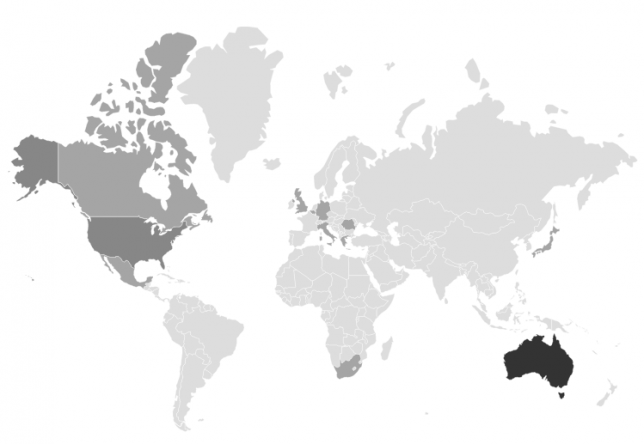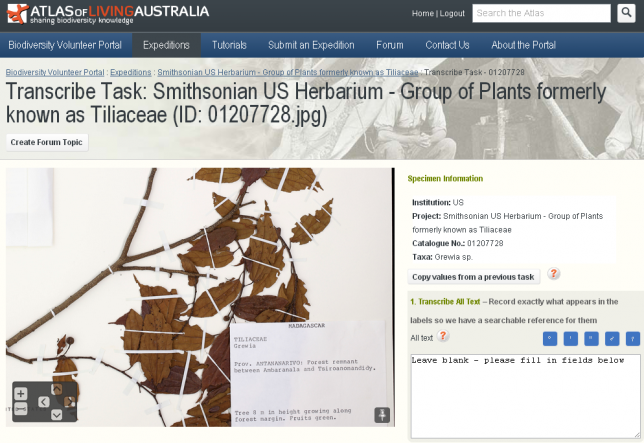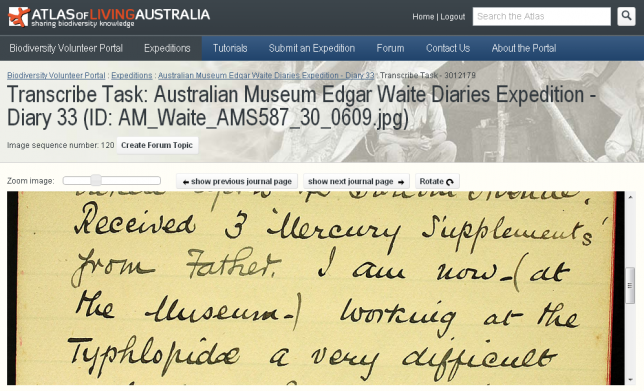The amazing volunteers who contribute to the Atlas of Living Australia’s Biodiversity Volunteer Portal reached a number of significant milestones in the past month:
- The transcription of our 50,000th task!
A task may vary from transcription of a small specimen label (just a few words) through to the transcription of a handwritten page from a field notebook or diary (many hundreds of words). - Our 500th volunteer transcriber joined the site.
- Our most prolific contributor, Megan, completed her 10,000th task
Our volunteers come from all around the world as this map shows, the darker the colour the more volunteers: 
The contribution that these volunteers are making to biodiversity science is impressive:
- Volunteers have captured data for over 589 Australian species, which are now available through the ALA.
- Many of the species records captured through transcription represent the only available data for those species
- For example 16 of the 21 species captured as part of the Froghopper Expedition represent the only data available in the ALA for those species
- Many other non-Australian species are being captured through international expeditions in areas like the Caribbean and Mexico.
- New York Botanic Garden’s 5842 records captured represent new records for 1691 species
- Transcribed texts provided content for websites such as this one on the fascinating Scott Sisters, http://australianmuseum.net.au/Beauty-from-Nature-art-of-the-Scott-Sisters
- A recent article in The Conversation emphasised the importance of Museum collections to understanding the impact of climate change on biodiversity. Volunteers on the BVP are contributing to the data available for research in this area.. http://theconversation.com/right-at-the-museum-collections-give-clues-on-climate-change-20067
- The Smithsonian Institute has found that the quality of data captured through the BVP is as good if not better than data they enter in house.
There are many millions of specimens that are locked away in collections. It’s a huge undertaking to make these specimens accessible to scientists around the world so we are always looking for more volunteers, so please come join an expedition back in time, experience life before computers and mobile phones through the eyes of a scientist, by transcribing:
The BVP was instigated and is managed by the Australian Museum, but its success has been such that it has attracted august institutions like the US Smithsonian Institute’s Natural History Museum and the New York Botanic Gardens to put up their own virtual expeditions for volunteers to participate in. So volunteers can join expeditions all around the world and capture data that is new to science.
To get involved and contribute to the global knowledge base on biodiversity join us at:
By Paul Flemons

